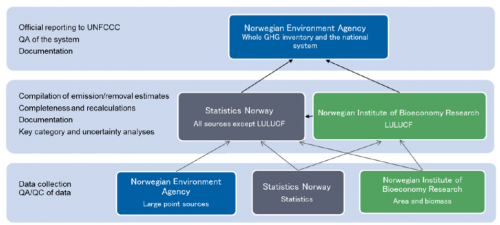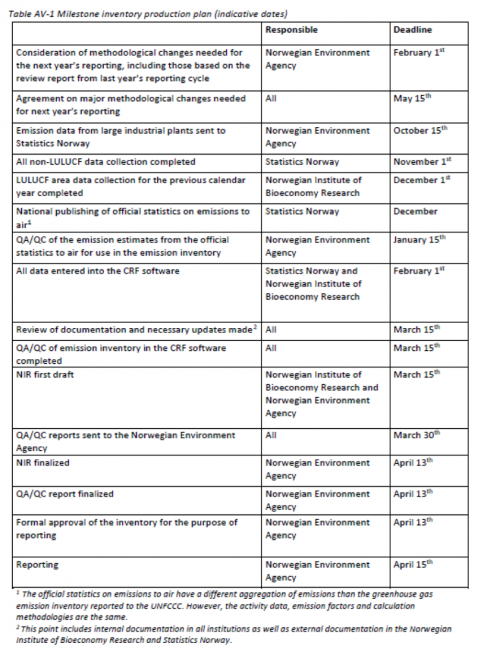Keywords: Institutional arrangements | Planning
Country context: Norway’s methodology for Tier 2 estimation of cattle emissions is structured around the availability of activity data in the TINE BA Cow Recording System (see Inventory Practice: The role of cow recording systems in Norway’s Tier 2 approach). This system collects data on individual milk production and feeding for dairy cows, and age at slaughter, carcass weight, and average daily gain for beef cattle. This well-defined source for most activity data required simplifies Norway’s centralized compilation of the GHG inventory for cattle.
Institutional arrangements: Compilation of Norway’s inventory is the responsibility of three institutions: The Norwegian Environment Agency, Statistics Norway and the Norwegian Institute of Bioeconomy (NIBIO). Statistics Norway is responsible for the calculation of emissions from the agriculture and several other sectors. To ensure that the institutions comply with their responsibilities, Statistics Norway and NIBIO have signed agreements with Norwegian Environment Agency as the national entity. Through these agreements, the institutions are committed to implementing the QA/QC and archiving procedures, providing documentation, making information available for review, and delivering data and information in a timely manner to meet the deadline for reporting to the UNFCCC.

Inventory compilation process: The three institutions involved agree a “milestone” production plan (Table 1), and each institution prepares their corresponding plan. Sector experts at Statistics Norway obtain data on animal populations and performance parameters recorded in the TINE BA Cow Recording System. Once data has been collected and QA/QC activities conducted, data is documented and archived separately by each of the three institutions. The archived information includes all input data, all estimated emissions, common reporting format tables, all technical documentation and details of any recalculations. The archiving systems used by each institution are consistent, which enables consistent QA/QC procedures to be applied.
Table 1. Production plan

Author: Andreas Wilkes, Values for development Ltd (2019)

